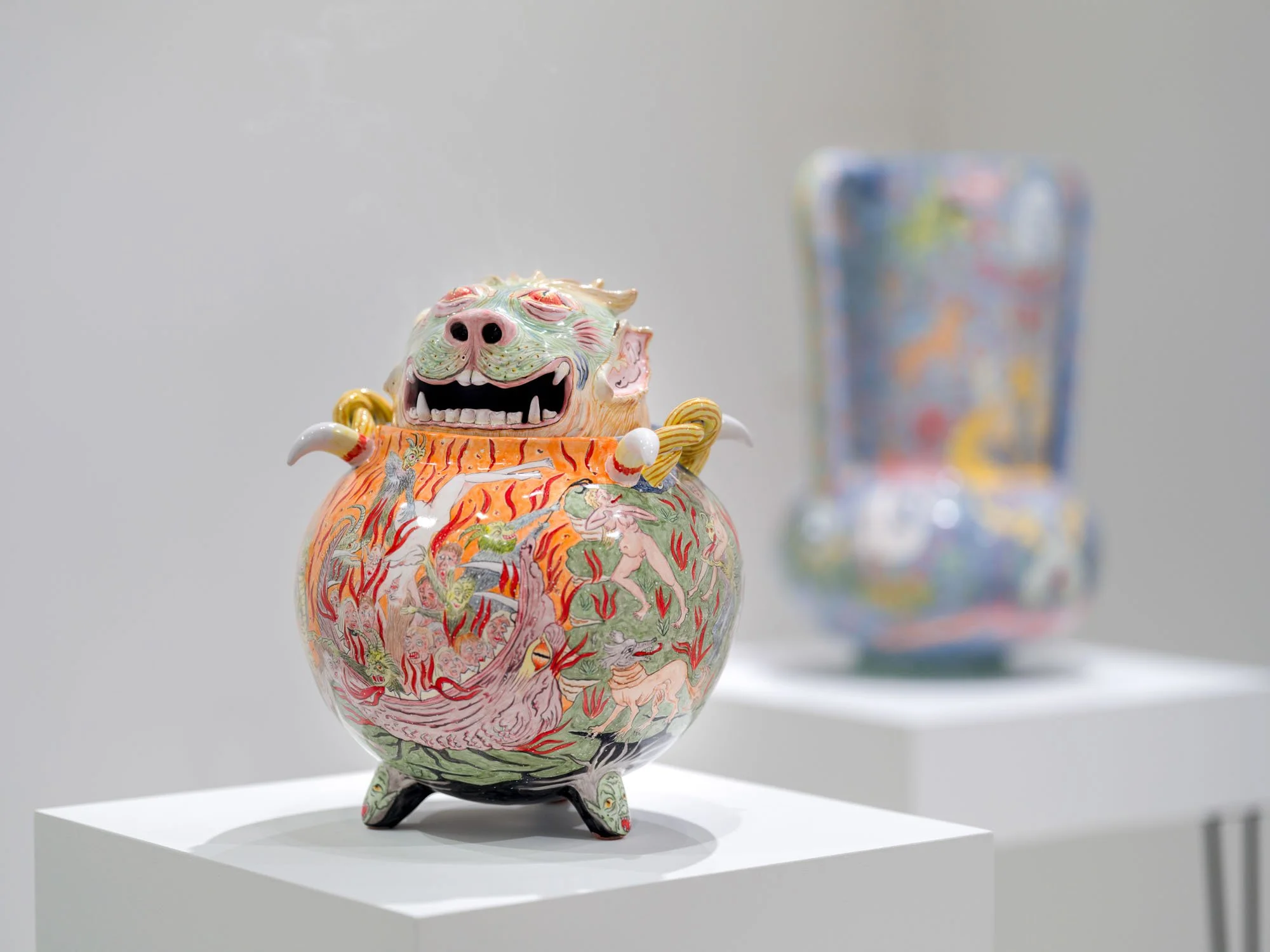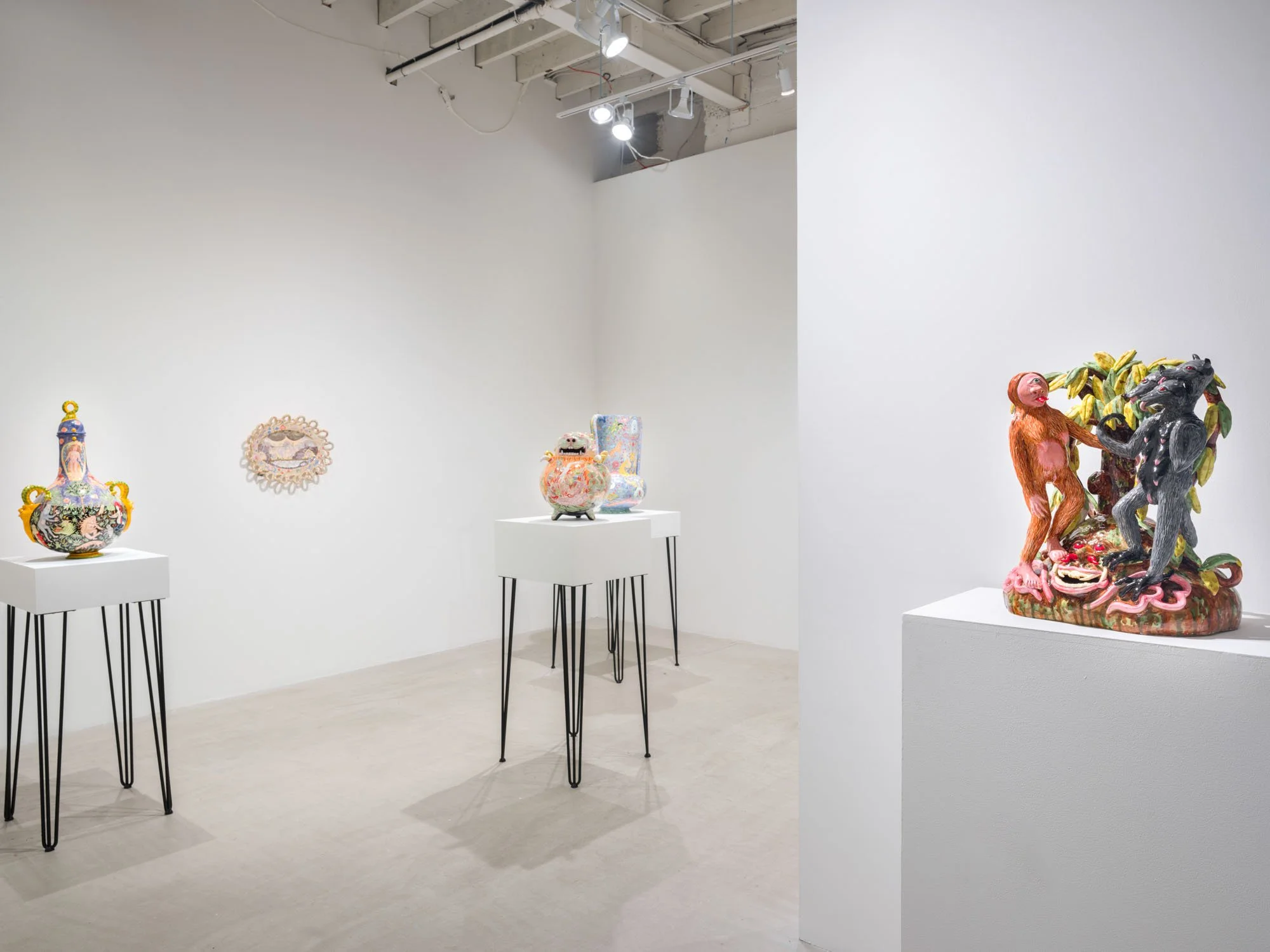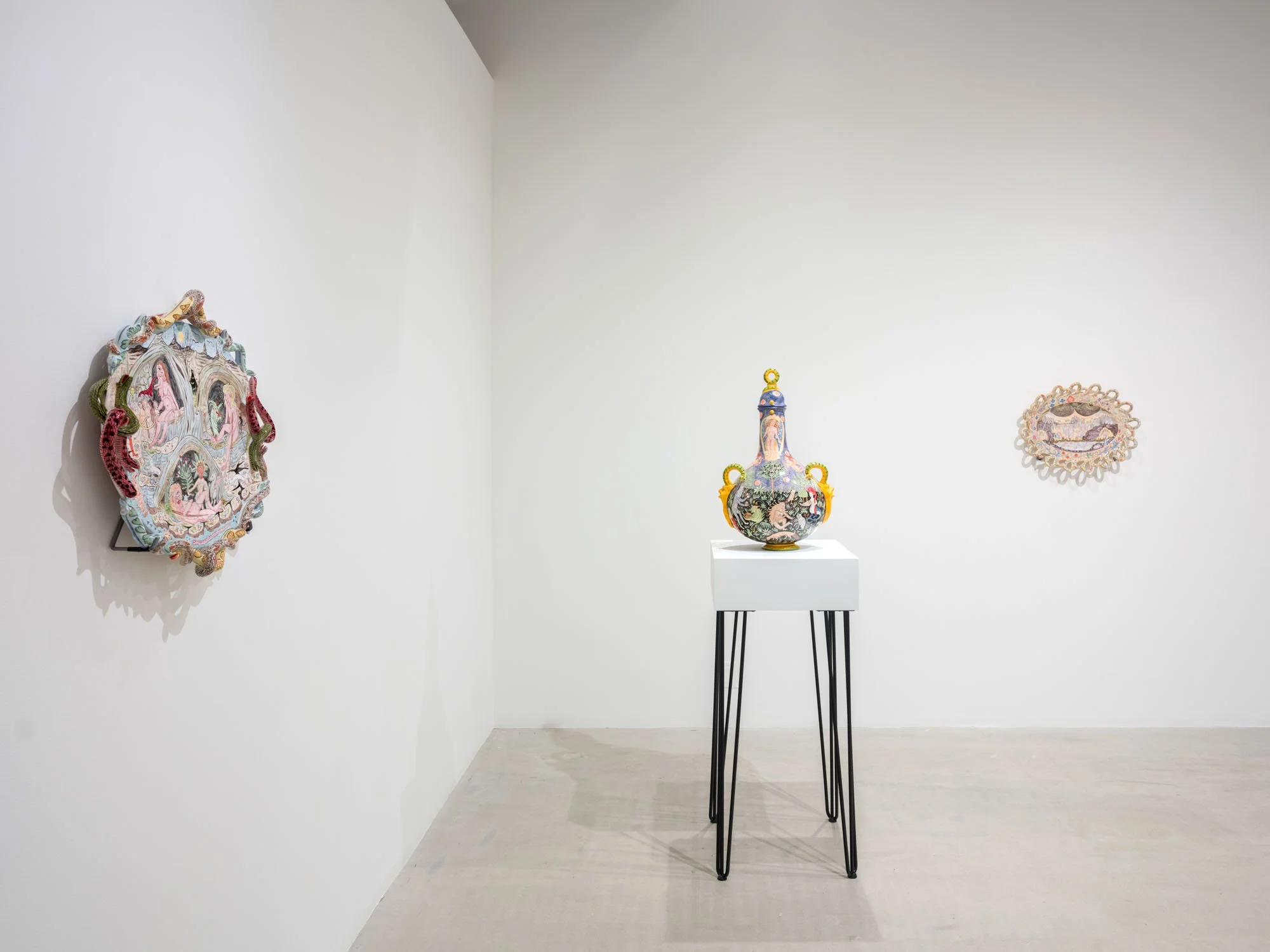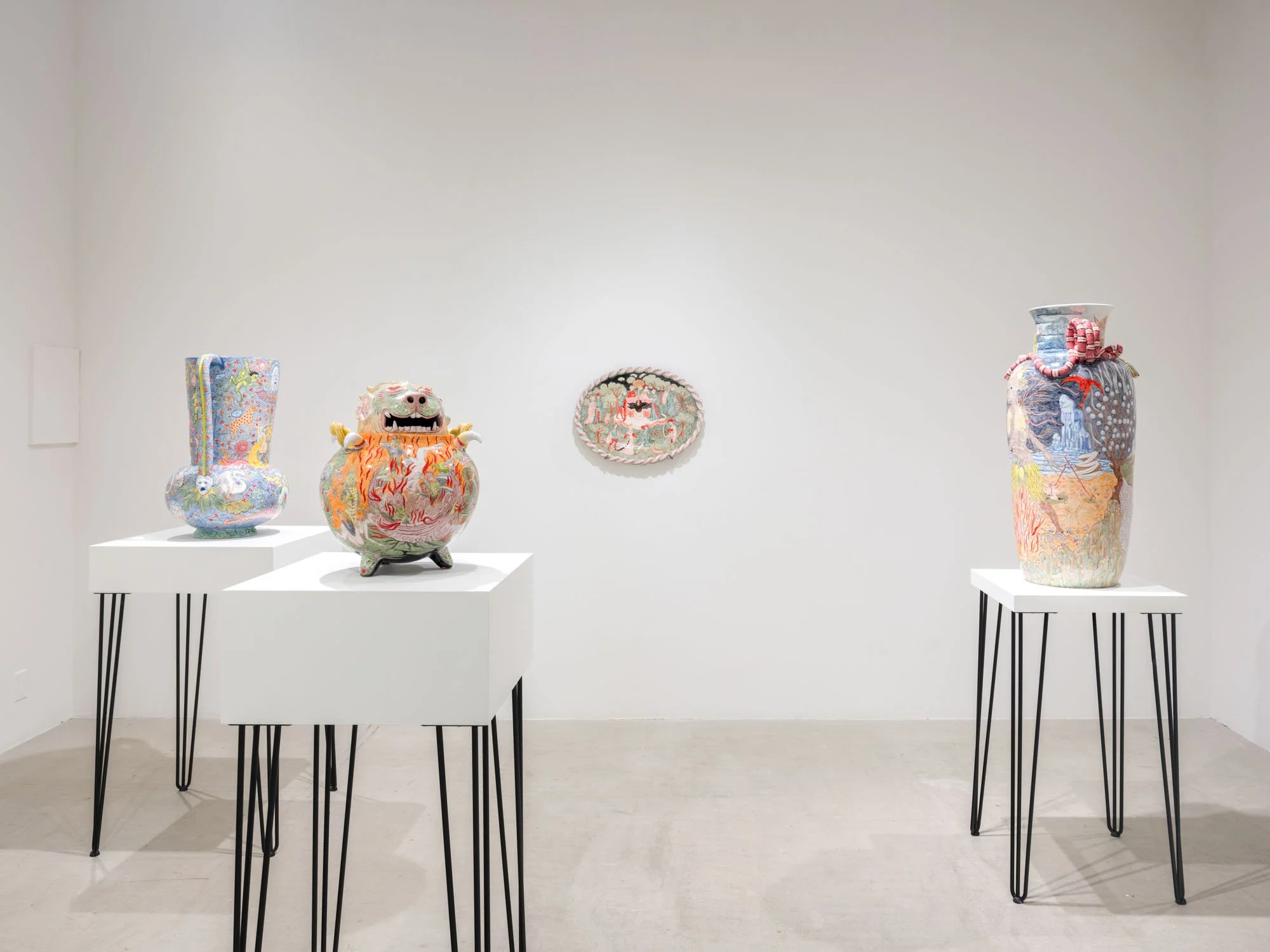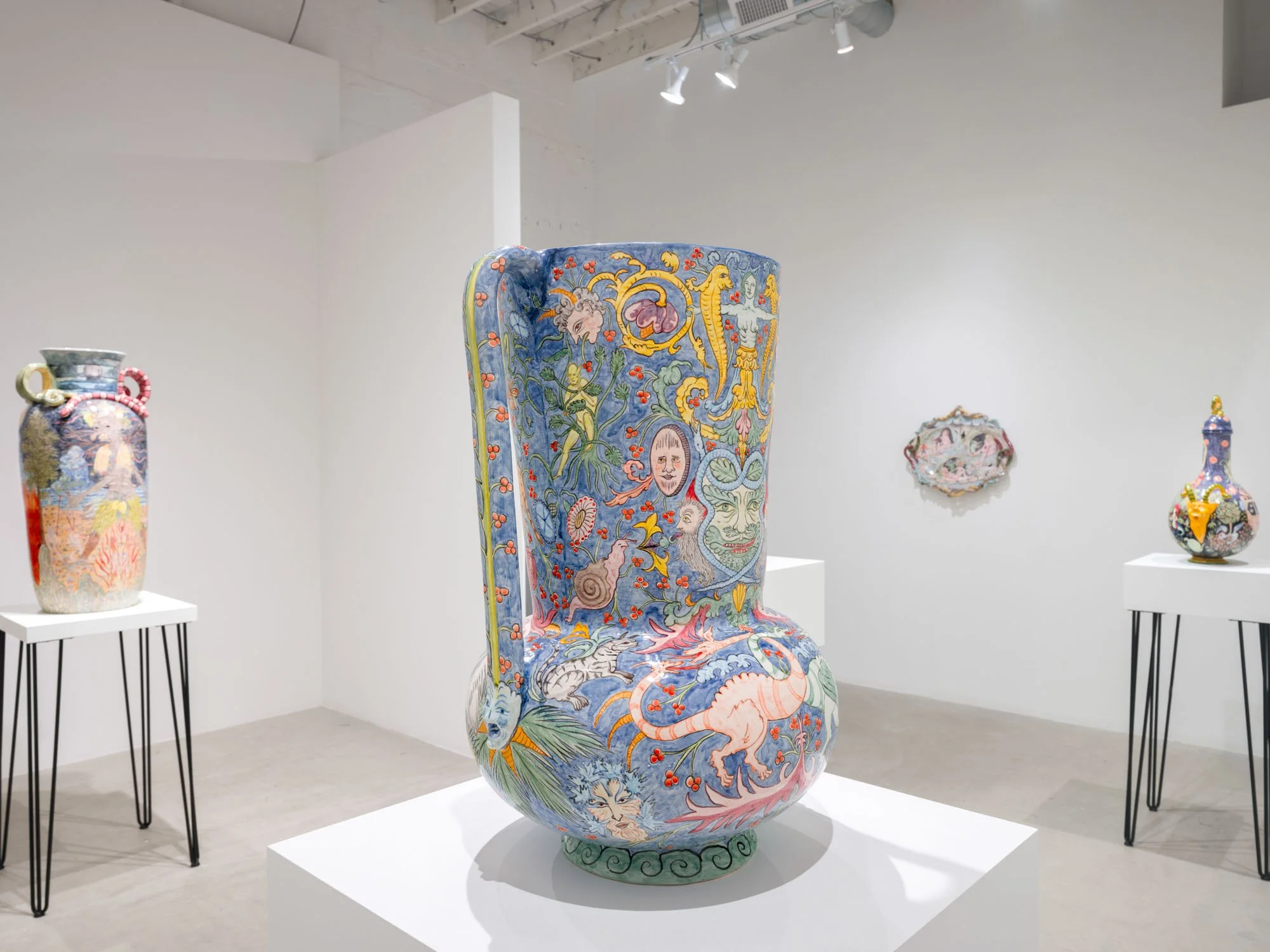21 WADE AVE #2 | TORONTO
Lindsay Montgomery | Bugbear | 17 Nov - 23 Dec 2023
In Bugbear, Lindsay Montgomery expertly draws on a visual language that she has been refining for the last two decades. Montgomery’s ceramic forms and the figurative and spatial elements of their narrative compositions are informed by close study of Medieval illuminated manuscripts and Renaissance decorative art and paintings, while the themes and issues present in her work mirror the complexities of our tumultuous contemporary moment. For example, created as Roe vs. Wade was being overturned, Hellmouth Censor 3 depicts a scene on the side of a sculptural incensor where hairy, horned devils taunt and torture pregnant people caught in the fiery maw of a hellmouth. Decorated with the scene of a whimsical garden, Pilgrim Flask 4 references Italian Renaissance historiato forms that Montgomery relates to potion bottles which she uses to allude to the search for magical cures during the darkest days of the COVID-19 pandemic. As well as considering circumstances with broader impact, Montgomery’s work grapples with personal reflections. In Generations Charger, Montgomery offers a personal meditation on intergenerational trauma, drawing connections between the experiences of the women in her family and family histories of alcoholism with the legacies of poverty, white supremacy, and settler colonialism in the rural wilderness of Ontario where she grew up and her family has lived for over a century.
The hermitage and the hellmouth are recurring scenes depicted on many of the works in Bugbear. In juxtaposing the idyllic scenes of the garden against hellscapes rife with suffering and chaos, Montgomery points to the dissonance of our contemporary moment where our daily lives are filled with mundane concerns and trivial joys, while simultaneously coexisting with and witnessing disaster, devastation, and travesty. Today, we live amidst a backdrop of frequent ecological disasters on unprecedented scales resulting from climate change, regressive politics and policies that threaten the lives of society’s most vulnerable and oppressed populations, civil unrest and wars between nations, and a breakdown in global labour systems and supply chains. The Purgatorium—the largest, most labour-intensive work in the series—suggests that the current moment is a type of purgatory where events of mythical proportions unfold while individual people helplessly watch on feeling powerless to intervene.
For Montgomery, hellscapes are the setting for the drama of the everyday, while the garden is the space for turning away from devastation to commune with and seek balance in the unbridled mystery and chaos of nature. Nature is personified in many of Montgomery’s works as the character of the woodwose—recast in Montgomery’s narrative universe as a wild feminine woodland cyclops who rejects Enlightenment tenets of reason and civility, instead choosing to retreat into the forest. In her Sicily Charger, Montgomery references and subverts the masculinity and patriarchy central to Apollonio di Giovanni’s The Adventures of Odysseus (1435–40). In Sicily Charger, woodwose are found holding a matriarchal court basking amidst mushrooms, snacking on humans, and being entertained by magical folk. In Cyclops and Cerberus Censor, the woodwose stands as the forces of nature with one foot on a hellmouth in opposition to the shewolf Cerberus, who personifies greed and is the guardian of hell. This work crystalizes the tension central throughout Montgomery’s work in Bugbear. In medieval times, many artists made work reflecting their perceived experience of apocalypse. In Bugbear, Montgomery uses fantastical allegories and whimsical imagery to express the strangeness and absurdity of our world today.
– Dr. Julie Hollenbach
Lindsay Montgomery works across a variety of media including ceramics, painting and puppetry to create objects, and performances. Her work is focused on creating mythologies that confront and re-imagine classical narratives to address a wide range of topics and issues including death and mysticism, feminism, and evolving modes of power. She earned a BFA from the Nova Scotia College of Art and Design and received her MFA from the University of Minnesota. Her work has been exhibited in Canada and internationally, and is included in the permanent collections of The Gardiner Museum for Ceramics, The Canadian Clay and Glass Gallery, and the Musée des Beaux Arts in Montreal. She lives and works in Toronto.
Dr. Julie Hollenbach is a queer white settler born on unceded Syilx territory, now living in unceded Mi’kmaq territory where she is an Assistant Professor of Craft History and Material Cultures teaching at NSCAD University.

